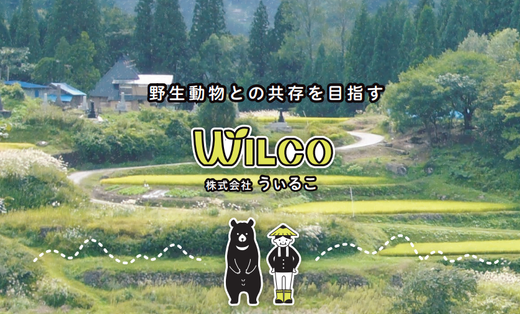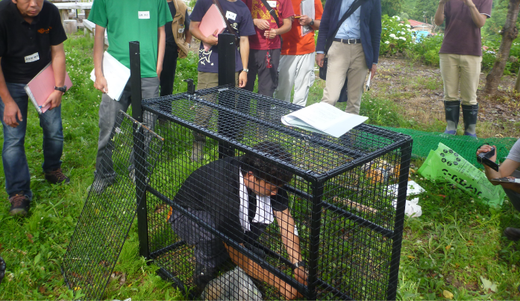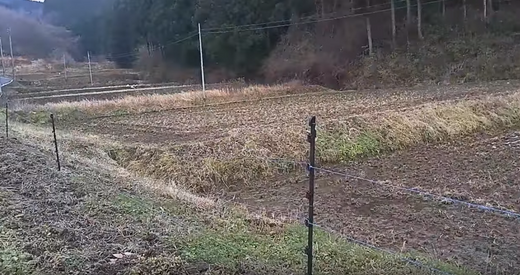In May 2018, "Wiruko Co., Ltd." was established as a social venture company from Nagaoka University of Technology in Nagaoka City, which is located almost in the center of Niigata Prefecture. This time, we interviewed Ms. Maki Yamamoto, who is the representative of the company.
 Ms. Maki Yamamoto, Representative Director, Wiruco Co., Ltd. Associate Professor, Nagaoka University of Technology, Doctor of Science. Specializes in wildlife ecology.
Ms. Maki Yamamoto, Representative Director, Wiruco Co., Ltd. Associate Professor, Nagaoka University of Technology, Doctor of Science. Specializes in wildlife ecology.-Tell us about the background to starting a company that specializes in wildlife damage control consulting. I have been working on animal damage countermeasures since 11 years ago when I became a faculty member at Nagaoka University of Technology.
At that time, monkeys were causing a lot of damage in Niigata Prefecture. was being implemented.
I was giving about 80 lectures a year, but when I started to feel that there was a limit to what I could do on my own, I started asking teachers and students who specialize in wildlife ecology at Niigata University and the International College of Natural Environment and Outdoors. In 2011, we established a voluntary organization (currently NPO Niigata Wildlife Research) to systematically work on animal damage control.

By making it a group, we have been able to continue to hold workshops, etc., and we have also become able to take measures against animal damage, so the prefecture has also come to properly secure the budget for animal damage control. In addition, there are governments that want proper guidance from experts.
On the other hand, in places like Gifu, Yamanashi, and Chiba, there were many NPOs and small companies working hard to implement animal damage control projects with a small number of people. In 2008, he established the Furusato Kemono Network, the first industry organization in Japan to deal with animal damage, and has been involved in various activities such as running the Kemono Juku, which trains experts in animal damage control. .
After that, Niigata Wildlife Research acquired corporate status and became a profitable organization, but since I am a teacher at a national university, it is almost as if I am a volunteer. I came to think that I would like to create a company where young people can make a living by supporting animal damage countermeasures by making the scale of the company large enough so that the work can be done properly without me.
Therefore, Nagaoka University of Technology is promoting the launch of a venture company, and we decided to launch a company with proper management guidance and investment. As a result, Wiruko Co., Ltd. was established in May last year as the university's first social venture company.
ーWhy did you start working on animal damage control?

When I got married, I moved to Niigata and worked as a high school teacher for six years. It was a mass infestation of bears that woke up. I witnessed more than 1,000 bear sightings in a year, of which more than 500 were killed.
I felt doubts about the response, and when I looked into the bear management situation, I found that the bears that came out without a proper management plan were being disposed of. In order for humans and animals to coexist, I have come to believe that only killing wild animals will not solve the problem unless experts who know the ecology of wild animals properly manage them and take appropriate measures against wild animals. For example, bears do not have territory, so even if you kill a bear that appears, another bear will come and it will not be a fundamental solution.
Therefore, if we don't properly understand the cause (bait, etc.) that attracts bears, and take measures such as installing electric fences in each village to keep them away, it will continue until the last one is left. and the bear descends. As for monkeys, if you shoot them with a hunting rifle, the herd will split up, making it more difficult to manage.
In this way, each animal has its own ecology, so it is important for experts to properly enlighten and take correct animal damage measures so that appropriate measures can be taken for each animal. I believe that it is the duty of experts to explain the correct knowledge of animal damage control in terms that are easy for ordinary people to understand.
- What is the actual flow of your work at Wiruko?

Wildlife countermeasures are basically carried out on a municipal basis, but there are no government officials who are experts in animal damage countermeasures. Therefore, what we put most of our efforts into is initial training for new government officials in prefectures and municipalities who have just been transferred. Four times a year, we conduct training to teach the basic knowledge of the minimum amount of animal damage countermeasures, such as wildlife ecology and research, damage control and utilization.
After having the administrative staff acquire a certain amount of knowledge about wild animals, the animals that are causing damage, the crops they grow, and the environment all differ from municipality to municipality, so it is necessary to take countermeasures according to the extent of the damage. Based on scientific data, we propose measures tailored to the situation of each municipality so that appropriate budgets can be put together.
We are commissioned to carry out each countermeasure project as a professional, and we are working to teach the technology between the government, local residents, and members of the hunting club. Specifically, we conduct all projects related to animal damage control, such as ecological surveys and data analysis of wild animals, practical training and study sessions on trapping, installation of control fences, and environmental maintenance of communities.
-What is the future that your company and Mr. Yamamoto are aiming for in terms of coexistence with wild animals?

The diagram above is the ideal future we aim for.
Currently, depopulation is progressing in the hilly and mountainous areas of Japan, and young people are leaving for the cities in search of work, leaving only the elderly. Therefore, originally, animals lived in the deep mountains and people lived in the villages, and there were mountains called satoyama and intermediate mountainous areas in between, which served as a buffer zone. Now animals live in satoyama, and it has become a kind of skirmish with humans in hilly and mountainous areas.
If the hilly and mountainous areas disappear at this rate, the front line of animal damage will naturally come down to the urban area one step ahead, and the places where human living environments are densely populated, such as urban areas, will become wild animals. It is very vulnerable to wild boars and monkeys, and there is a possibility of causing traffic accidents, personal injury, and urban panic.
Therefore, I think that it is necessary to create a system that allows people to live in hilly and mountainous areas and create a buffer zone between them and the city, and if possible, people can live in hilly and mountainous areas. For example, we can create industries that make use of the blessings of hilly and mountainous areas, and create a system that allows young people to enter agriculture. It is also possible to consider a system of local production for local consumption, such as consuming at
Unless the hilly and mountainous areas are preserved to a certain extent, the problem of urban animals will become more serious. I want to make one.
Animal damage will inevitably occur as long as biodiversity is protected, and there is no option to eliminate wild animals, which are important assets of humankind. As long as there are both humans and wild animals, there will always be friction.
In order for humans and animals to coexist with each other while keeping an appropriate distance, we will leave a proper place for them to live in the mountains, and while we humans live in the village, we will create a buffer zone with a sense of tension between each other. I would like to become a professional who supports proper animal damage control in that buffer zone.

 箱罠
箱罠
 くくり罠
くくり罠
 パーツ類
パーツ類
 電気柵
電気柵
 自作キット
自作キット
 防獣グッズ
防獣グッズ
 監視カメラ
監視カメラ




 box trap
box trap
 tying trap
tying trap
 enclosure trap
enclosure trap
 Prevention and avoidance goods
Prevention and avoidance goods
 electric fence
electric fence
 trap surveillance camera
trap surveillance camera
 transportation goods
transportation goods
 Trap detection sensor
Trap detection sensor
 hunting supplies
hunting supplies
 hunting books
hunting books
 Anti-bird goods
Anti-bird goods
 Agricultural materials/machinery
Agricultural materials/machinery
 boar
boar
 deer
deer
 Kyon
Kyon
 monkey
monkey
 raccoon
raccoon
 Badger
Badger
 palm civet
palm civet
 raccoon dog
raccoon dog
 nutria
nutria
 mouse or rat
mouse or rat
 Mole
Mole
 bear
bear
 pigeon
pigeon
 Crow
Crow







